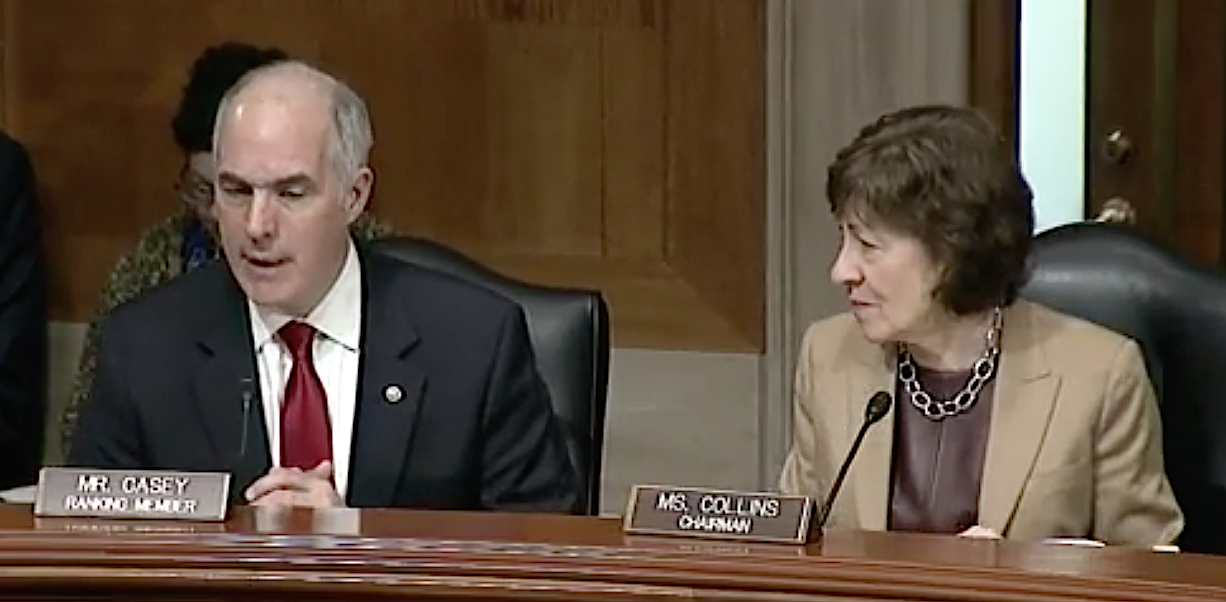
Bipartisan legislation introduced in the Senate on Monday aims to increase the number of geriatric health professionals and direct service workers to support the aging population in the United States.
If passed, the Geriatrics Workforce Improvement Act (S. 2888), sponsored by Sens. Susan Collins (R-ME) and Bob Casey (D-PA), would reauthorize the Geriatrics Workforce Enhancement Program at $45 million per year over the next five years and also would reinstate the Geriatric Academic Career Awards program at $6 million per year.
Collins and Casey are chairman and ranking member, respectively, of the Senate Special Committee on Aging, and both are members of the Senate Committee on Health, Education, Labor and Pensions, which held a hearing about the healthcare workforce shortage on Tuesday.
“LeadingAge is pleased to see a committee hearing on the workforce issue,” LeadingAge President and CEO Katie Smith Sloan said. “This is one of the top concerns of our members in all parts of the country.”
Sloan said LeadingAge also would like the Health, Education, Labor and Pensions Committee to “pay particular attention to the needs in the long-term services and supports sector.”
“In the LTSS sector,” she added, “the most critical workforce need is for nurses at every level of the profession and for direct-care workers.”
LeadingAge is part of the Eldercare Workforce Alliance, which also sent a letter supporting the act. The EWA noted that the Senate measure is similar to bipartisan legislation proposed in the House of Representatives.
The country needs 20,000 geriatricians to meet the needs of older adults, Collins said, yet fewer than 7,300 physicians are board-certified in the specialty. As the need grows, other healthcare professionals and direct-care workers also also are needed, she and Casey said.
“Together, GWEP and GACA would develop a high-quality geriatric workforce ready to provide care for Americans as we grow older,” Collins added.
The GWEP is the only federally funded program to educate and train healthcare professionals in geriatrics. It is in action at 44 sites across 29 states.
GACA programs, which were established in 1998, are designed to increase the number of faculty members working in geriatric education by supporting healthcare professionals’ transitions from clinical practice to academia. After a restructuring of the geriatric workforce program, GACA has been unfunded since 2015.
Collins and Casey “have hit the nail on the head” with the proposed legislation, Lindsay Schwartz, associate vice president of workforce and quality improvement at the American Health Care Association / National Center for Assisted Living, told McKnight’s Senior Living.
“We’re going to need more staff to care for seniors in assisted living communities and all long-term care settings,” Schwartz said. “The Geriatrics Workforce Improvement Act is a step in the right direction to help combat this workforce shortage.”



